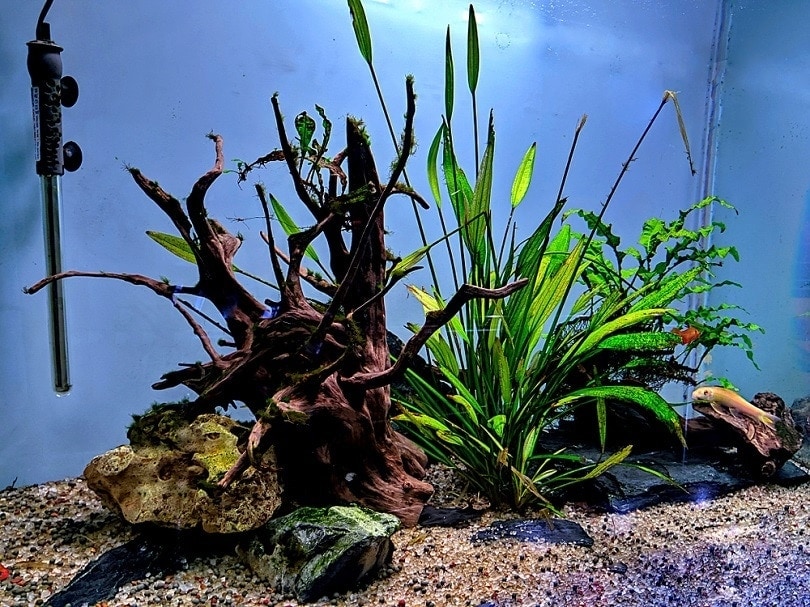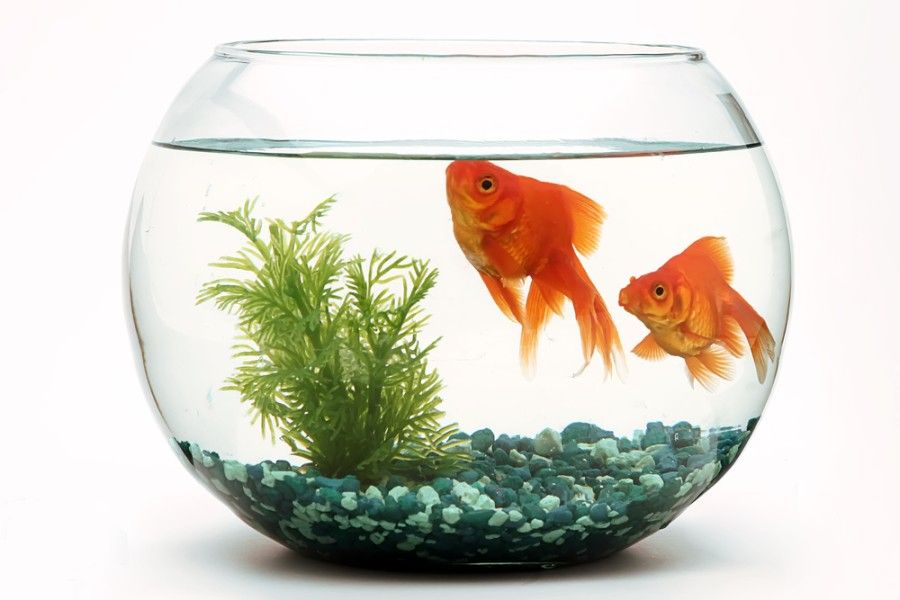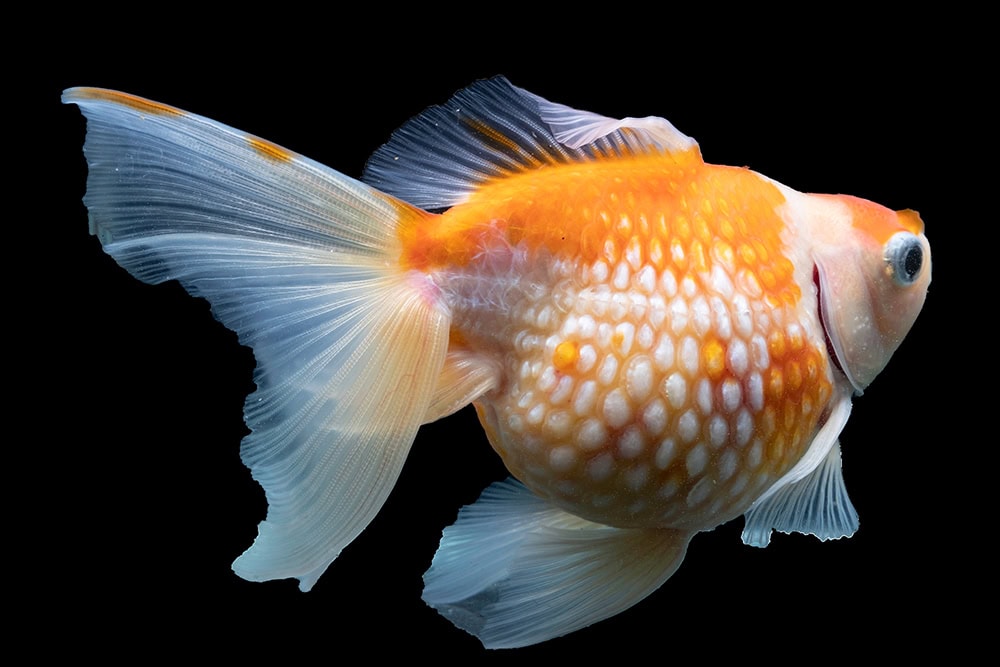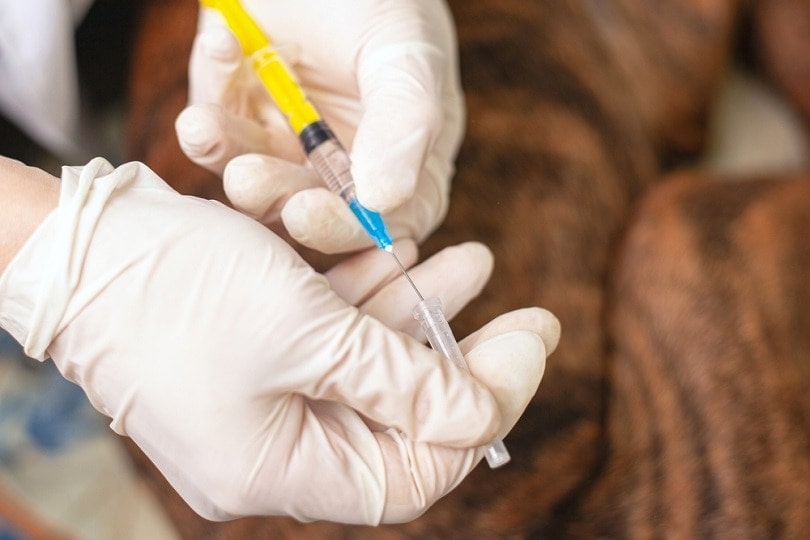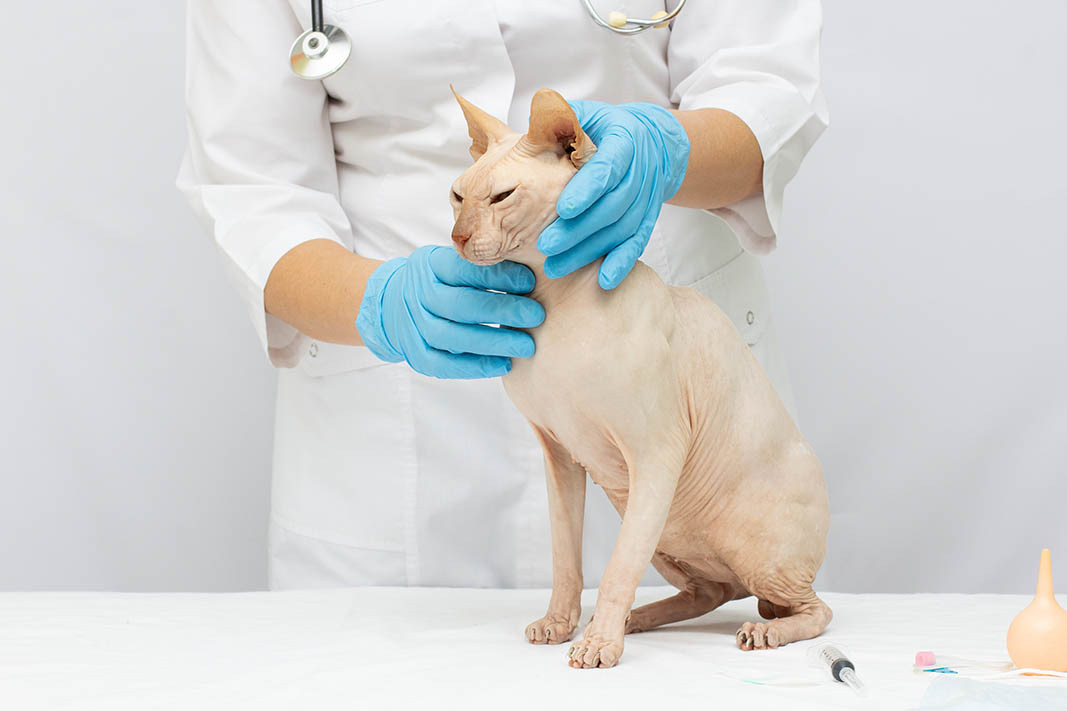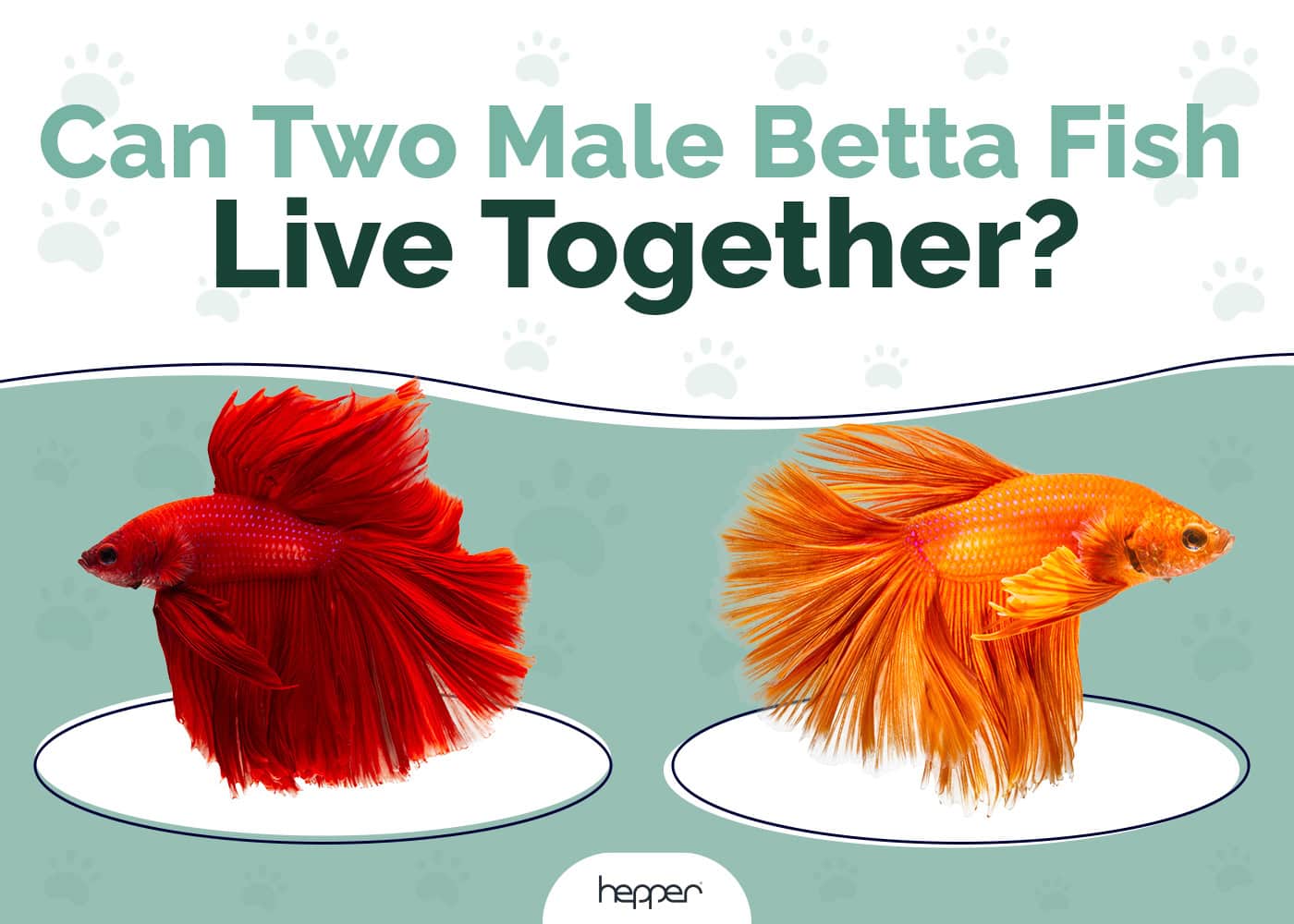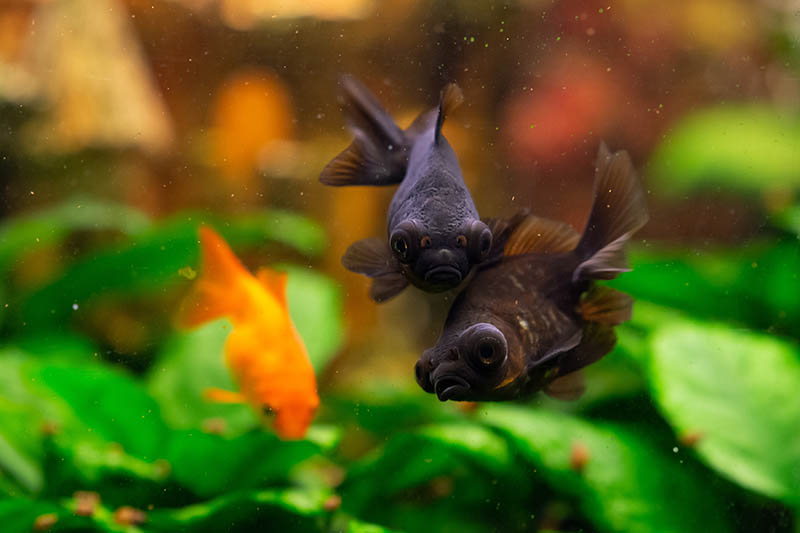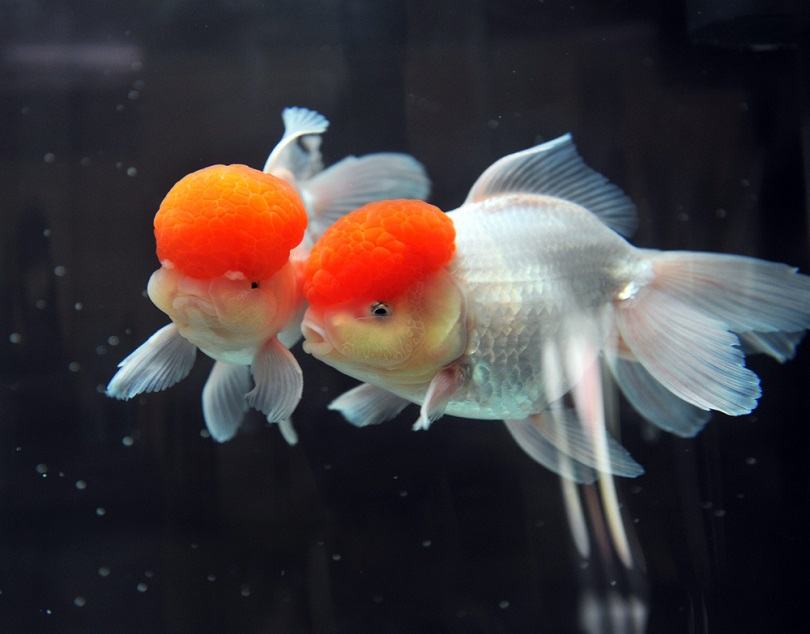Pompom Goldfish: Pictures, Size, Care, Tank Setup & More
Updated on
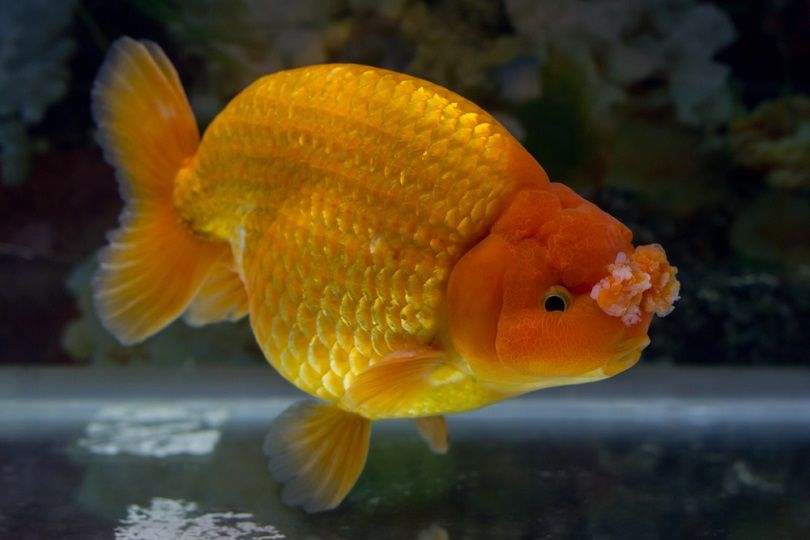
Click to Skip Ahead
Who would have thought a carp could become such a beloved pet as the goldfish? The Chinese domesticated the species roughly 2,000 years ago.1 Now, nearly 200 varieties exist thanks to selective breeding. That includes the singular Pompom Goldfish. It is a far cry from its drab-looking wild counterpart. Its vibrant colors and curious features make it stand out from the rest.
This variety has existed since the late 19th century before finding its way to Europe and finally to North America. Its popularity may have waned in recent years. However, it is no less striking.
| Size: | 4–6 inches long |
| Lifespan: | 5–10 years |
| Similar Breeds: | Lionhead Goldfish, Bubble Eye Goldfish |
| Suitable for: | Beginners |
| Temperament: | Friendly, intelligent, gregarious |
Pompom Goldfish Characteristics
Pompom Goldfish Cost
Goldfish are relatively easy to breed, so you’ll find captive-bred specimens for sale. The Pompom Goldfish doesn’t exist in the wild. It would probably have a hard time surviving with its unique body shape. The many varieties add popularity to the mix when it comes to availability and price. Pompom Goldfish aren’t as common as other fancy fish. Nevertheless, you can expect to pay under $30 for one.
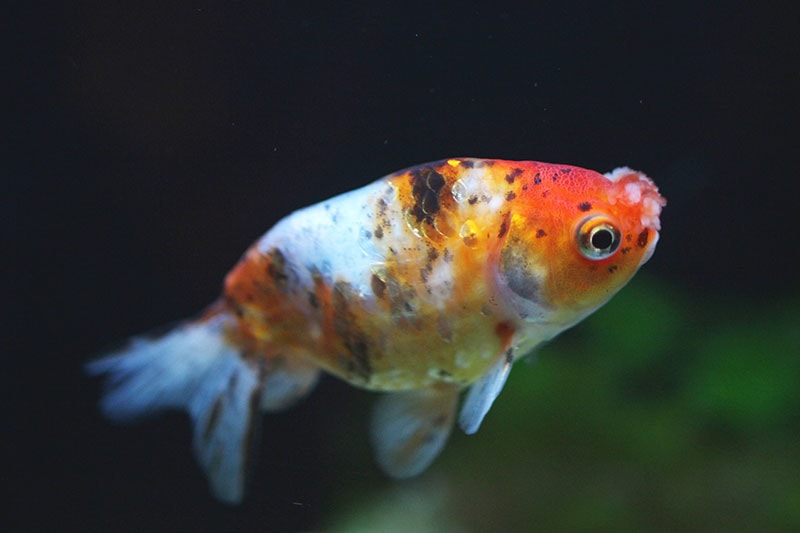
The Sociability of Pompom Goldfish
Goldfish school in large groups. They are quite sociable amongst themselves. This behavior also offers protection against predators. Safety in numbers, as the saying goes. Therefore, if you want to get one, plan on getting some tankmates, too—as long as your tank is big enough to accommodate them. We recommend setting up the largest one you can. More room is better for these fish.
Do These Fish Make Good Pets?
These fish are excellent beginner fish. They are tolerant of conditions that would stress many other species. That comes from its history of living in slow-moving waters in its native eastern Asia. However, they are also messy fish. They’ll dig up any live plants you have in your tank. Their appetite and waste don’t have an off switch, either.
That just means you have to be careful not to overfeed your goldfish. You should also clean the aquarium and do bimonthly water changes regularly. However, the care of the Pompom Goldfish is no different than other varieties.

Does This Fish Make a Good Tankmate?
The Pompom Goldfish is a slow-moving variety. You shouldn’t put it with fast fish, like Comet Goldfish. You can keep it with other fancy goldfish, such as Lionheads and Bubble Eyes that would have similar habitat requirements. Just remember to keep the tank size on the front burner when populating your aquarium.
Care Guide & Tank Setup
Water Quality, pH & Temperature
Water quality is vital for any fish. The problem is that goldfish make it challenging. They have a voracious appetite, producing a lot of waste. They are also opportunistic feeders that don’t seem to know when to stop eating. Therefore, regular maintenance and closely monitored feeding are essential. They are tropical fish that prefer cooler waters between 65–78℉ with a pH range of 6.0–8.0.
We recommend testing the pH, ammonia, nitrite, and nitrate levels at least every 2 weeks. You should also do partial water changes on the same schedule. Make sure to remove debris wedged in the substrate with a siphon to keep the toxins under control.
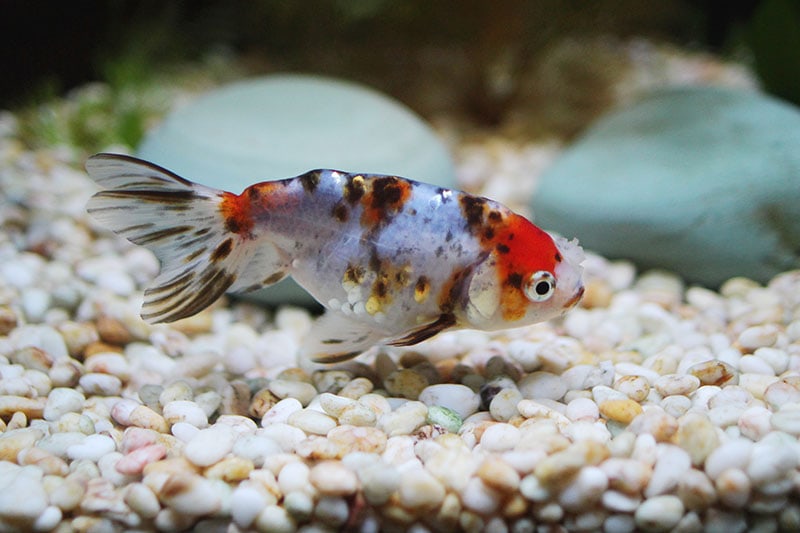
Substrate
Plan on having about a 3-inch layer of gravel. You should opt for rounded rocks to protect its pom poms from injury. Dark-colored substrates will provide an attractive contrast to the fish’s orange, white, and yellow hues. Make sure to get a product with pieces larger than your fish can swallow. You can also add larger stones to provide hiding places and cover for your pet.
Plants
Vegetation is a significant part of a wild goldfish’s diet. Therefore, if you put live plants in your tank, your goldfish will likely uproot and eat them. You can get various species of pondweed (Potamogeton spp.) in your aquarium for it to eat and artificial ones for cover and aesthetics. It’s worth noting that goldfish can’t synthesize vitamin C and need vegetation to provide it.
Lighting
You should provide at least 12 hours of light for your Pompom Goldfish. They can see colors. Therefore, the lighting can help them navigate their world and locate food. You can set a hood light on a timer to ensure your pet gets adequate light. You should avoid placing your tank in direct sunlight, which can encourage unsightly algae growth.
Filtration
A filtration system is a must-have with any goldfish. You can use a power filter in combination with a biological one to ensure healthy water conditions. This species lives in stagnant and slow-moving waters in the wild. Therefore, it is more tolerant of less-than-ideal water chemistry than many other fish species out of necessity.
Things to Know When Owning a Pompom Goldfish
Food & Diet Requirements
You should give your Pompom Goldfish a commercial diet formulated for this species. It’ll provide the right amounts of the nutrients it needs for good health and brilliant color. You can feed your fish twice daily, only offering enough that they consume within a short time. You can also supplement its diet occasionally with leafy greens, krill, and brine shrimp.
Size & Growth Rate
Goldfish grow relatively rapidly during their first three years before slowing when they reach adulthood. A nutritious diet and a large tank are imperative for Pompom Goldfish to achieve their growth potential. They will grow about an inch a year with the right conditions. This variety reaches a maximum size of 6 inches long.
Varieties
The distinguishing features of the Pompom Goldfish are the fleshy growths or nasal bouquets on its head and the lack of a dorsal fin. You’ll see them in a wide range of colors and color combinations, including white, yellow, orange, and black. Adult goldfish can continue to grow in the wild, a life cycle called indeterminate growth.
Lifespan and Health Conditions
The main concern with the Pompom Goldfish is the nasal bouquets. You should avoid putting sharp or rough objects in your tank to reduce the chances of injury. Sadly, the water conditions can leave your pet vulnerable to bacterial infections should it hurt these vulnerable areas. These fish are susceptible to ailments that plague many other species. Healthy tank conditions are an effective preventive.
- Loss of color vibrancy
- Fin rot
- Ich
- Fungal and bacterial infections
Male vs. Female
Female goldfish are slightly thinner than males. Otherwise, you won’t notice differences between the sexes visually or as pets. They have multiple breeding cycles and mate during the year as a polygynandrous species. A brief courtship ritual of chasing and pheromone proceeds spawning and external fertilization. The fry hatch in less than 9 days.
The 3 Little-Known Facts About the Pompom Goldfish
1. The Pompom Goldfish’s Origin Is Unknown
The species’ nasal bouquets were likely a mutation that appeared spontaneously. Enthusiasts selectively bred the fish to retain this feature. The rest, as they say, is history.
2. A Subvariety of the Pompom Goldfish Has a Dorsal Fin
The Japanese variety, called Hanafusa, has a dorsal fin, which distinguishes it from the Chinese one, which lacks this feature.
3. The Appearance of the Pompoms Varies Between Individual Fish
The arrangement and size of the distinctive pompom differs between the individual fish. Some are rounded and relatively small, while others are large and long.
Final Thoughts
The Pompom Goldfish is sure to catch your eye with its gorgeous colors and unique body shape. It would make an excellent addition to a large tank with other slow-moving species. It makes a good choice for beginners who want to raise fancy varieties like this one. Regular maintenance will ensure a healthy environment for your aquatic pet to thrive.
You Might Also Be Interested In:
Featured Image Credit By: Ek Ing, Shutterstock


